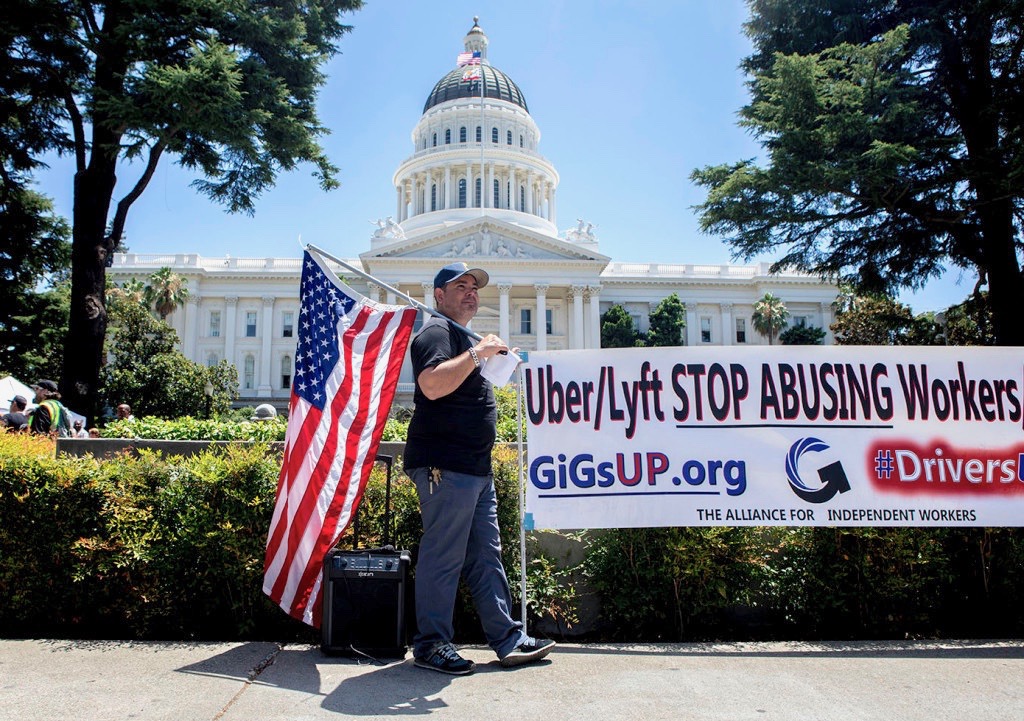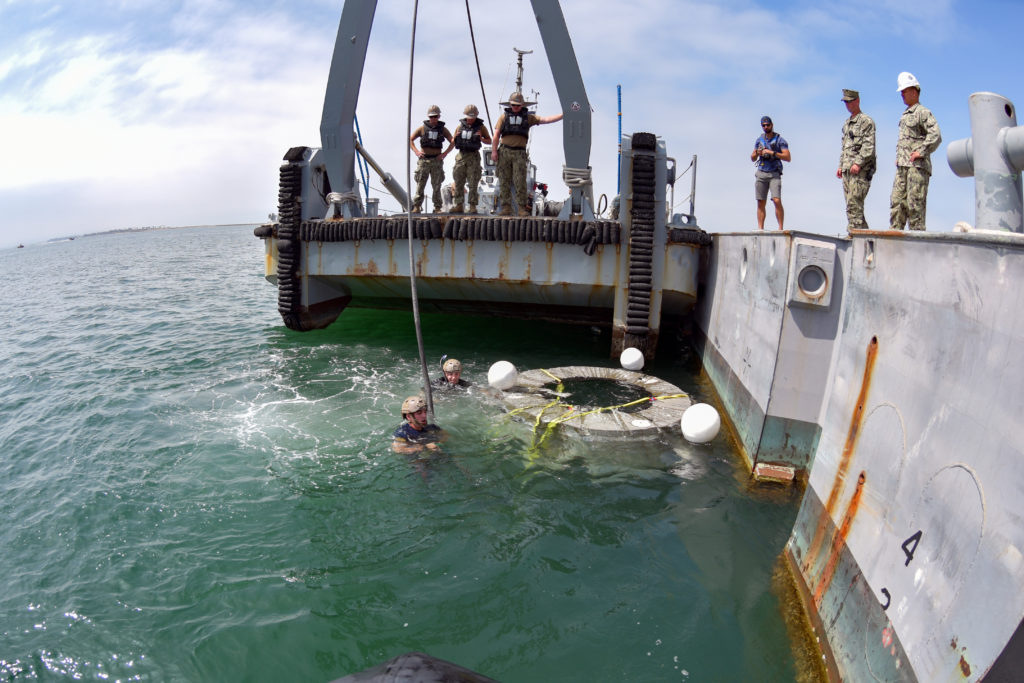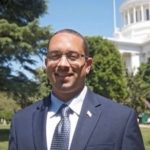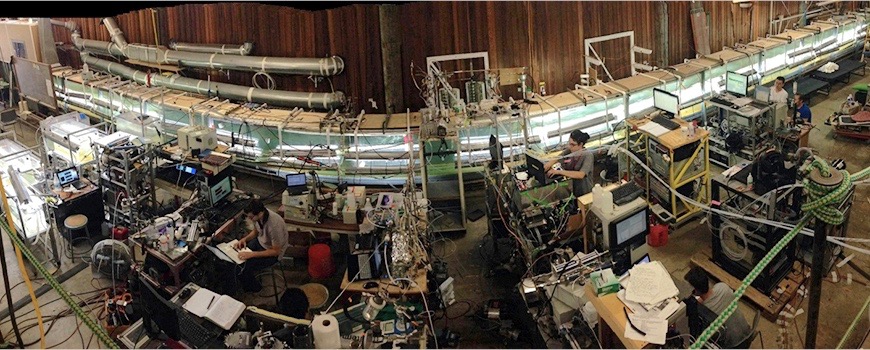Daily Business Report-Aug. 28, 2019
The Transducer Evaluation Center in Point Loma, part of the Naval Information Warfare Center Pacific, a division of Naval Information Warfare System Command, where several City College students have been tapped to work, allows for the testing of underwater technology. (U.S. Navy photo by Mass Communication Specialist 1st Class Charles E. White)
College district partners with Navy to give
STEM students experience, jobs in cybersecurity
San Diego City College graduate Froylan Maldonado can’t believe his good fortune. Even before he transfers to UCLA this fall to further his studies in computer science and mathematics, Maldonado has signed on to work with the San Diego-based Naval Information Warfare Systems Command, formerly known as SPAWAR, during breaks from school and once he graduates. He is one of 16 City College STEM students selected for an initial cohort taking part in a groundbreaking new partnership between Naval Information Warfare Systems and the San Diego Community College District in which the naval agency will provide opportunities for tuition assistance and career growth.
“When I heard about this program, I’m thinking they probably only want to target superstars, why are they looking at us community college students?” said Maldonado, 22, who was raised by a single mom. “It seemed too good to be true. The hardest part for any student is finding a job once you’re out of school. I already have one waiting for me when I graduate.”
With record-low unemployment and a shortage of trained industry professionals, Naval Information Warfare Systems officials say they must become more creative in building and sustaining their ranks. The company’s partnership with the SDCCD goes beyond City College and includes working with San Diego Continuing Education in offering certification programs aimed not only at expanding the skills of Naval Information Warfare Systems employees, but also training returning adult learners.
In addition, Naval Information Warfare Systems and the SDCCD’s Military Education arm will target military members returning to civilian life and wanting to learn about cloud computing, cryptology, network security, software development, and artificial intelligence — all with an eye on strengthening a pipeline of high-tech, STEM-centered employees. Additionally, the organization is looking at further expanding the program to include contractors.
The partnership also fits into a larger SDCCD vision of working with businesses and industries in order to provide students with more opportunities to find good paying careers.
__________________________

Gig economy bill faces pivotal vote
in Senate Appropriations Committee
CALmatters
Lobbying is intensifying over the biggest employment bill of the year, the so-called Dynamex bill that could turn 2 million independent contractors into employees.
Assembly Bill 5 by Democratic Assemblywoman Lorena Gonzalez of San Diego faces a pivotal vote Friday when the Senate Appropriations Committee will decide whether to hold it, or, more likely, let it to proceed to a vote of the full Senate.
The labor-backed measure will affect Uber and Lyft, and much of the gig economy.
Uber and Lyft drivers plan to converge on Sacramento in a union-backed demonstration of support for Gonzalez’s bill.
Sens. Kamala Harris and Elizabeth Warren are among the Democratic presidential candidate who support Gonzalez’s bill.
Lyft has enlisted former U.S. Sen. Barbara Boxer.
Harris’ brother-in-law, Tony West, is Uber’s general counsel
Labor unions released a study Monday conducted by the UC Berkeley Labor Center finding that independent truck drivers could be hindering the state’s climate change goals.
Contract truck drivers have the lowest compliance rate with clean vehicle regulations at 61 percent, compared with 83 percent for large firms that employ their truck drivers, the study says.
The California Trucking Association argues that independent truck drivers have been investing heavily in new equipment to comply with clean truck standards as a condition of vehicle registration starting in 2020.
__________________________

Woods Partners announce grand opening
of Valentina by Alta housing in Lttle Italy
Wood Partners announced the grand opening of its newest luxury residential community — Valentina by Alta — at 1919 Pacific Highway in Little Italy.
Valentina by Alta is a pet-friendly community totaling 110 units comprised of studio, one- and two-bedroom floor plans and penthouse homes, many with unobstructed views of the bay from expansive private balconies. The apartment homes may also include foyers, gas ranges, oversized kitchen islands, walk-in spa showers, and in-home full-size washer and dryers.
Community amenities include a resort-style pool overlooking the bay with a pool house and cabana for socializing and community events, an on-site gym with separate yoga studio and planned group fitness classes, a resident parlor and salon, serving as hubs for residents and their neighbors, and both a bay and sky terrace with sweeping water views. Bike and surfboard storage provide a secure space for residents’ outdoor toys.
Valentina by Alta joins a list of five properties managed or development by Wood Partners in California and is the second community in San Diego
__________________________
Cummins partners with UC San Diego
on second-life battery development
Cummins Inc. announced a multi-year partnership with the University of California San Diego and its battery validation lab to analyze viable business and technical approaches to effectively reuse and repurpose electric vehicle batteries.
Under the agreement, UC San Diego will perform accelerated testing and real-world application testing, and will develop an outdoor second-life demonstration system comprised of Cummins battery modules. The collaboration will enable Cummins to acquire valuable data on the aging behaviors of its battery modules, test integration solutions for second-life battery systems, and validate stationary energy storage system performance under grid energy storage applications.
__________________________
Cubic to showcase at Australian event
Cubic Corporation announced that Cubic Defence Australia, which operates within its Cubic Global Defense business division, will showcase its leading defense simulation and training solutions at the Australasian Simulation Congress 2019taking place on the Gold Coast from Sept. 2-5. The event brings together industry professionals and customers to demonstrate the latest simulation technologies, research and practice.
__________________________
UC San Diego Health performs first
HIV-to-HIV kidney transplant in region
For the first time in Southern California, surgeons at UC San Diego Health have transplanted the kidney of a deceased donor with HIV into a recipient with a pre-existing HIV infection. The procedure is part of an unprecedented multi-site national clinical trial to evaluate the safety and benefit of HIV-to-HIV kidney transplantation.
The procedure occurred earlier this month. The patient is expected to make a full recovery.
In 2013, Congress passed the HIV Organ Policy Equity (HOPE) Act, an effort to alleviate a chronic shortage of donor organs, which hits patients with HIV particularly hard, resulting in extremely long wait times and a greater likelihood of dying before a donor organ becomes available.
Though organ transplants between donors and recipients with HIV have been successfully conducted in South Africa since 2008, such transplants were illegal in the U.S. until passage of the HOPE Act, which permits transplants of kidneys and livers from donors with HIV to qualified recipients with well-controlled HIV and end-stage organ failure, under approved research protocols. The kidney clinical trial launched last year. The transplantation of organs from donors with HIV to recipients without HIV remains prohibited.
__________________________
North County Hispanic Chamber
presents Business Expansion Symposium
A Business Expansion Symposium presented by the North County Hispanic Chamber of Commerce on Sept. 17 will feature a keynote address by Sarah Bonner, senior international trade policy specialist for the SBA Office of International Trade. The event will be from 9 a.m. to noon at the SDG&E Energy Innovation Center, 4760 Clairemont Mesa Blvd., San Diego 92117.
Bonner has 15 years of experience in international trade and policy, serving in multiple U.S. executive branch agencies, the private sector, and a U.S. industry association. She has participated as a U.S. delegate in bilateral trade agreement negotiations, led on trade agreement compliance work, and supported activities to advance passage of free trade agreements.
__________________________
Pacific Southwest Railway Museum partners
with Spreckels Organ Society to show silent movie
The Pacific Southwest Railway Museum is partnering with the Spreckels Organ Society for the final concert of its summer-long 2019 San Diego International Organ Festival on Saturday, Aug. 31 at the Spreckels Organ Pavilion in Balboa Park. Admission to the concert is free.
Starting at 7:30 p.m., the Spreckels Organ Pavilion will be a showing “Chasing Choo Choos,” a 1927 silent movie starring stuntman and comedian Monty Banks. Organist Clark Wilson will discuss and accompany the silent movie on the world-famous Spreckels Organ, considered to be the world’s largest open-air musical instrument.
Roughly seven minutes of the 22-minute movie features dramatic runaway train scenes showcasing the San Diego & Arizona Railway (SD&A) locomotive and freight cars with scenes of San Diego’s rural backcountry.
__________________________
Navy Divers at Work in Coronado

__________________________
Commentary
It’s time to overhaul California
Public Utilities Commission
By Kish Rajan | Special to CalMatters
What do Uber, mobile homes and sewers have in common?
That’s not the first line of a bad joke. It’s a serious question we Californians should be asking ourselves, because the answer is that all three are regulated by the California Public Utilities Commission.

The list of items under CPUC purview is long and varied, and frankly, somewhat random. In addition to the above, the Public Utilities Commission regulates natural gas pipelines, telecommunications, and broadband and emergency reporting.
But wait, as late-night TV commercials beckon, there’s more.
Last year, the Public Utilities Commission stepped in to intervene in wildfire prevention, high-speed rail, the electrification of transportation lines, the electric grid, battery storage on that grid, emergency preparedness, clean energy for disadvantaged communities, broadband access for rural communities and water on the Monterey Peninsula.
Given that laundry list of responsibilities, it is difficult to fathom that the Public Utilities Commission unsurprisingly started simply when it was created by voters in 1911 as a way to check the power of railroad monopolies.
Over time–thanks particularly to decades of our elected officials passing off politically tricky issues–the Public Utilities Commission has grown into a catchall for the state’s thorniest problems.
With an annual budget of $1.6 billion, the commission employs more than 1,300 people and continues to grow each year. It has become the largest and most powerful regulating agency in the state, bar none.
That’s not good, not for the Public Utilities Commission, the entities it regulates, and most importantly not for the people of California. Instead of focusing on core issues and overseeing them well, the agency has been inefficient in handling its broad spectrum of responsibilities.
On top of that, there has been plenty of discussion about whether the Public Utilities Commission is too cozy with those it regulates. For example, the agency has faced stiff criticism for failing to enforce electric companies’ wildfire prevention plans. Other critics says its outdated licensing processes aren’t up to managing the pace of innovation.
The truth is it’s simply not possible for one agency to be an expert in such a smorgasbord of areas. That’s why the Public Utilities Commission should focus on public utilities and threats to public safety. Period.
Relieving the California Public Utilities Commission of some of its extraneous duties fits nicely with Gov. Gavin Newsom’s stated mantra of streamlining government. Earlier this spring, he floated the idea of overhauling the agency from the top down. That’s a wise idea that Gov. Newsom’s predecessors have toyed with but not followed through on.
Now is the perfect time for Gov. Newsom and the Legislature to follow up on this concept, given the retirement of former president, Michael Picker, last month. The governor’s newly appointed president, Marybel Batjer, who has a well-earned reputation as a bureaucratic “fixer,” is in a prime position to refocus the agency on what should be its top priorities, while allowing other things to fall away.
A reorganized and refocused Public Utilities Commission will allow the commission to return to its stated mission of empowering California through access to safe, clean, and affordable utility services and infrastructure.
—
Kish Rajan is chief evangelist of CALinnovates, a nonpartisan coalition of tech companies and nonprofits, some of which engage in issues before the California Public Utilities Commission, kish@calinnovates.org. He wrote this commentary for CalMatters, a public interest journalism venture committed to explaining how California’s Capitol works and why it matters.


